Probably the main reason many people don’t dare do it themselves is they’re afraid of not doing it right. More to the point, they’re afraid of doing it wrong – breaking something, or making a problem worse.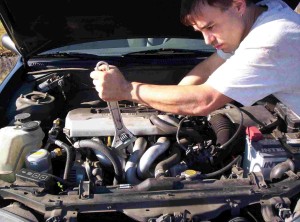
But unlike surgery on people, cars are harder to permanently hurt. If you approach the “operation” from the proper perspective.
Problems arise from one of two causes, usually – sometimes both of them together.
The first is – not knowing what you’re doing, but trying to do it anyhow. This goes for everything from that first teenaged oil change to the first time you try to tear down (and put back together) an engine.
How not to get into trouble?
Never guess, never assume.
The information – the procedures – is readily available for almost any vehicle. In a library, at your local car parts place or online. What you want – if you’re in any doubt about what to do and how to do it – is a repair manual for your particular vehicle. These range in comprehensiveness and specificity – and the one you want will depend on what you intend to do.
If you’re just starting out – interested in doing some DIY routine maintenance such as oil and filter changes, basic brake work and so on – the Haynes or Chilton’s manuals they sell at most auto parts stores (as well as online, via Amazon and so forth) ought to be enough for your purposes. These manuals typically cover a given model across a number of years of production (e.g., Chevy Camaro, 1993-2000) and may not have fine, year-to-year details that would be important for a major teardown. But they’re fine for walking you through an oil change, brake work and other less-than-Master-Mechanic jobs. These manuals are also pretty inexpensive – about $30 or so.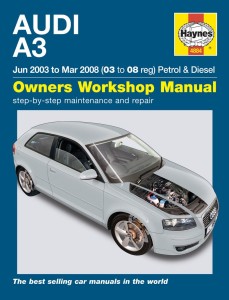
It’ll pay for itself after you do your second oil change.
If you “graduate” to more involved work – or think you might want to – then you may want to consider obtaining a copy of the factory service manual for your particular vehicle. By “factory” I mean the one published by (as an example) Ford . . . or Honda. And so on. You buy these new from the dealership – lately, in CD form. Or used from various sources – eBay being an excellent place to look. This is something worth buying used – because the cost new can be pretty high ($100 or more). Remember: So long as all the pages are there, it doesn’t make the manual any less valuable if it has some grease smudges on the cover.
The next potential stumbling block is – tools. Not having the right ones.
The Catch-22 facing the first-time DIY’er is that – being a first-timer – he not only hasn’t got much in the way of tools, he probably has no idea which tools he does need.
Figuring out which tools are the right tools is usually pretty easy – if you take the time to find out. The better repair manuals will actually tell you – and some will have pictures. See here for some info about welding etch.
The absolutely critical thing is never to guess – or try to “make it work.” The easiest way to get soured on doing-it-yourself is to get frustrated – and that’s very easy to do when you round off a nut, for instance – because instead of the right-sized socket you tried to get it loose with the wrong-size crescent wrench.
Sometimes, specialized tools are required – even for basic jobs like an oil/filter change. You may find you need – as an example – a filter wrench specific to the size of your vehicle’s oil filter, as well as neat little tools such as “wobble” extenders that give you just that extra little bit of angle/working room to get at something that might otherwise be very hard to get at. I have literally half a dozen different sized oil filter wrenches, because of the wide variety of filter types used in my various vehicles. A good way to find the right one for your vehicle is to go to a car parts place, look up the filter your vehicle takes, get one – and then use it to find the right filter wrench from among the many the store will no doubt have available for sale.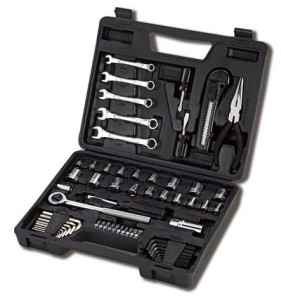
Basic tools for basic jobs are – generally – pretty inexpensive. A socket set with the most common size sockets (SAE, from about 1/4 inch to about 3/4; metric from about 8 mm to about 17 mm) plus a good selection of Phillips head and flat blade screwdrivers should be plenty to get you started. You will expand your tool chest as you go.
If you discover you need something you haven’t got, it may not be necessary to buy the tool. If it’s expensive – or something you are pretty sure you may only need once (or once in a very long while) you can often rent the tool – ask (again) at your local auto parts store. Or, ask a friend. Someone you probably know probably has what you need – and would be probably be happy to let you borrow it and might even be willing (as well as competent) to show you how to use it.
The most important thing – above all else – is not to proceed when you are not sure. Stop. Refer to the manual. If that doesn’t help, do not forge ahead. Read more – ask a wider circle. Wait.
Be patient.
It’s less important, in the grand scheme of things, to have the car temporarily taken apart – as opposed to permanently broken.
Throw it in the Woods?
PS: We have a Q&A area here at EPautos.com – see the top menu bar, off to your right. Or just click here. We’ve got several pretty solid wrenchers here who’d be happy to help. Again – just ask!




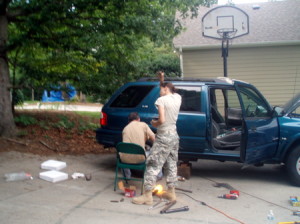
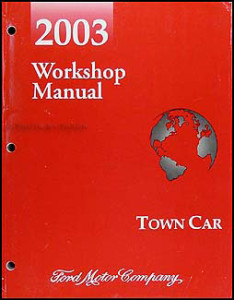






Serious driving skills!
Dom,
Cool that he was able to get out. I am curious how he became stuck in the first place.
There’s an entire series of videos on youtube of Russian truck drives crossing rivers. It’s what they do over there!
Not sure how it didn’t get hydro-locked. Must have an intake at the very top.
Also no pollution controls on that beast.
He had to have it set up for boating (snorkel or some high rise).
To paraphrase an old saying: They will have to pry my tools, car keys, Harley key, Big Green Egg, and assault weapons out of my cold dead hands!!
Use a tool once or twice? Get it from Harbor Freight and save a bundle. Use it 3 times? Get Craftsman or other quality brand. On a budget and can’t afford new quality? Watch for estate sales and check pawn shops.
However, I’ve never had much luck buying tools at auctions. Too many people bid them up and the auctioneers know it, so they tend to keep the auction going until they get the price they want, not the price they get.
I have found many a use for HF tools. Second set, stuff like extra long wrenches, short hammers, and other odd stuff that was just too cheap to pass up. Air tools where I wanted to try a type of airtool and they were so cheap to where I am risking less than $10 instead of a $150 to see if it’s something useful to me.
Oh and stuff like engine supports, shop presses, and stuff like that, on sale, coupons,etc… really good buys. I bought an engine support on a whim because it was cheap. Really came in handy for a timing belt replacement.
Agree, Brent –
I have a few (no, many) HF tools myself. Some are of decent quality, too. A key factor is whether you’ll be using the tool regularly. If it’s just a once-in-awhile tool, it’ll probably do what you need it to.
My heavy use tools are mostly “name brand.”
The only reluctance I’ve got with regard to HF is I know they’re more labor arbitraged Chinese-made products and by purchasing them I am doing my small part to help mega-corporations enslave not just the Chinese, but us, too.
Just be glad that your Master’s still allow you to work on your own cars (for now anyway).
Eventually working on your own vehicle will probably be banned under OBUMMER Care (you might scrape your knuckle or something worse) or the changing of your own oil in the driveway will contribute to GLOBULL Warming or some other trumped up BS.
And I wonder, how would “they” ban working on cars under OBUMMER Care? They won’t ban working on cars, they’ll just outlaw private ownership of tools. The unions would love it, and with the gun regulations we already have, there’s already a precedence. No?
@ Helot
Re “Banning Working on Cars under Obummercare”
Please don’t think this thru from a standpoint of logical – it is like teaching a pig to sing – you will just get frustrated and annoy the pig.
The point being that if there exists the “Potential” to injure yourself while working on a car (anything from scraping a knuckle to the car falling off a jack and crushing oneself) then it should be ‘banned” as being detrimental to society at large, because the insurance companies would have to actually pay out and thereby raising everyones rates.
See if you think it thru from the Socialist Collective point of view it makes perfect sense to ban working on cars under Obummercare.
Zig Heil Obama.
Now excuse me while I go wash up – I feel so dirty…..
@GW, Ha! And, yeah.
I would not be surprised if Obamacare required you to donate your time, tools and parts to your poor neighbors car repair in order to keep your health policy. You are your brothers keeper after all comrade.
Logically, Obamacare implies there is no aspect of your life that’s “yours.” Everything you are – and do – involves the collective. Or could – and therefore, the collective has the right (according to this logic) to interpose itself. For your own good – and for the good of the collective.
How can it be argued – again, having already accepted the Obamacare premise – that I not pay a higher Obamacare premium because I ride a motorcycle (or that motorcycle riding be allowed at all)? And working on a bike (or car)? Just imagine if you got hurt! Who will pay for that?
The imbeciles who backed Obamacare have given over to the state – to the people who run the show – literal in loco parentis powers over them.
But that’s what they wanted, I suppose.
Unfortunately a lot of the “name brand” stuff is made in China also. Today the wife wanted to go clothes shopping, so it was off to the mall, I place I usually stay away from. While she shopped for the latest fashions imported from various sundry 3rd-world pestholes, I went over to Sears to check out the tools.
Sears Craftsman tools have been a staple of the home mechanic’s toolchest for decades. Unfortunately at this point most of the Craftsman brand tools appear to be made in China (or Taiwan). I looked at wrenches, socket sets, pliers, screwdrivers, power tools — almost all of it comes from our friends in the Peoples’ Republic. (There were still a few Made-in-USA items, but not many.)
So if you’re going to wind up with China-made tools anyway you might as well pay the lower Harbor Freight price as long as they are not total junk. (HF’s online reviews are helpful for this since they don’t take down negative reviews.)
It’s a shame, I’m old enough to remember a time when practically everything was made in the U.S.
Eric: Those cheap Chinese tools have come a long way! I (& you too) prolly remember that, in high school, those cheap Tiawanese tools were absolute garbage! Now, they are okay, to the point where certain Craftsman-branded tools are made in Taiwan. So, for today, the cheap Chinese tools have replaced the cheap Tiawanese tools of my youth. Like you said, need something once or twice, cheap Chinese it is. Go-to tools are Craftsman, MAC, Snap-On or (even) Lowe’s and True-Value store brands. (Ones that are USA-made of course…)
Hi Tom,
It depends!
For example, I’ve noticed a major decline in the quality of Vise Grip tools since they sent their manufacturing operation to China. I have “pre” and “post” in my tool box. The “pre” Vise Grips are of obviously higher quality.
On the other hand, I have several tools purchased at Northern and Harbor Freight (both stores carry Chinese made stuff almost exclusively) and they’re ok.
If you are a newbie – do your best to get some help and advice from someone experienced in the task. At least the first time.
My 16 year old nephew had a real beater Ford Ranger truck handed down to him. He worked for two days on an ignition/ electrical problem and assumed there was something wrong with the the battery or coil. I saw at what he was doing and suggested tracing the circuit with a meter to find the fault. Two hours of explanation and practical hands on learning later, (and reading the electrical schematic in the repair book) he now knows how to use a meter and find an intermittent ignition switch contact problem.
Eric is right on about getting the book for your vehicle, before setting off on repairs. Years ago I called for help on a network computer product that did not work right. The engineer at the company asked if I had RTFB. What is that I asked. Read The Frigging Book, because your problem is already covered in chapter X was his answer.
Tools – Ah yes. Harbor Freight (McDonalds) to Snap-on/ MAC (a real chef just prepared your meal), is where you can spend your allowance if it becomes a hobby you want to get good at. Fortunately these days most chain auto parts stores will rent or give you many of the seldom used tool types (like pullers and suspension tools) for free.
Learn how to weld
https://www.youtube.com/watch?v=MuWa_PZ-b5Y
– if you’re the one capable of rebuilding fans the shit hits, you should be able to survive anything
MIG & MAG Welding
https://en.wikipedia.org/wiki/Gas_metal_arc_welding
Everything you wanted to know about diesel engines
https://www.youtube.com/watch?v=S-3SywOvBN4
How to strip a car for parts in 6 min – timer is in upper left
http://www.youtube.com/watch?v=3hhNwcaEwHI
Beneath the governmental machinery, in the shadow of political institutions, out of sight of statemen and priests, society produces its own organism, slowly and silently; it constructs a new order, it prowls and exudes its growing vitality and autonomy.
The servants of the dead who amass property through positions of force and sleep in mausoleums ringed with razors and gates will soon awake to the new reality that all they once possessed has been taken by stealth and carried off in the night, lost forever.
This article is so timely. I may invest in the manufacturer/factory service manual for my next car. The problem with these books, the internet, ect, everyone has a different method on how to do things. Everyone has an opinion, and everyone calls out everyone else on why their method is wrong.
Flushing coolant. Just use a garden hose. NO! You must use distilled water! Can you use store brands? Yes! NO! You must buy the specifically formulated coolant from your manufacturer…
Did you know advance auto parts doesn’t take coolant anymore? For that reason alone I’ll probably never change coolant at home again.
My story is an absolute disaster. Getting coolant out of the radiator was easy enough, but what about the block? Well, the drain bolt is above and behind the oil filter, which is blocked up top by the intake manifold runners. I don’t have the tools to get around that, so I figure I’ll change the oil too. I buy a oil filter wrench that was too big, it didn’t clamp around the filter in its tightest form. And the oil drain bolt… I couldn’t get it off. Let WD-40 soak it for 10 minutes too. I’m not sure if it was cross-threaded or torqued way beyond spec, but I don’t have power tools, so I just stopped there. Wasted Saturday, wasted money, and feeling like a total failure, with only half of my coolant changed to show for it. Just like Pedro stated above, their methods totally worked, but I’ll never take it to THAT shop again. Luckily I managed to not totally destroy my car that day 😛
Brandonjin, sounds to me like you needed a cheater bar to get that oil drain bolt off. No need for power tools, You *are* The power.
A cheater bar is a very sturdy pipe about 24″ long which slips over the handle of your wratchet. Or, it’s a bar about the same length (sold at auto parts stores or Harbor Freight) which accepts a socket on the end. Leverage is an amazing thing to behold.
You say, “total failure” I say, chalk it up to a learning experience, they are valuable and you tend not to forget them.
Also, I cannot recommend highly enough the mechanix gloves they sell in auto parts stores. They do tend to eliminate bloody knuckles, make working in the cold more bearable, and reduce how dirty you get.
I just wish they had them when I first started wrenching!
Latex gloves are great to wear while changing the oil, but for most everything else, the mechanix gloves are kick ass.
Brandonjin, You’re sweating about something easily done but not conventionally. I’ve seen countless engines where the block drain was behind the motor mount. Even had one I couldn’t get out when it was on the engine stand, had to drill it out. But you don’t have to get all the coolant out the first time. Refill it with distilled water, bring it up to temp again and drain again. Repeat this process until you have clear water only coming out. Now you can add the correct amount of coolant(check to see what the entire system holds and add half that much pure antifreeze. You’ll have some room left so add whatever amount of water tops it off and you have 50/50 blend. Be sure and have your heater turned on full so it changes the heater core water too. Once the engine is topped off, take your coolant and make some 50/50 blend and bring your overflow up to it’s level after things have cooled down. BTW, WD40 is fairly useless for a penetrating oil. I found one decades ago that will get into millionth of an inch gaps and does what all the rest claim and believe me, I’ve used them all. It’s called Kano Kroil, about $35/gal and then they have specialty products too. If you can find a retailer you can buy it in aerosol cans but once you have a gallon and one of them squirt cans, you have practically a lifetime of product on hand.
For tough bolts to get out, buy a good quality break-over bar and use a 6 point socket with it. That piece of pipe that goes over that bar is your “extra” muscle. I have seen times I broke sockets removing heads that had been over-tightened. If something seems this tight, buy a cheap set of impact sockets and it will come out for sure, no broken wrenches. It really doesn’t hurt to have a 3/4″ break-over handle with a 1/2″ adapter either. I have broken a break over handle before with a cheater and took the person’s name in vain who tightened that fitting. You’ll know to change brands of tools at that point. I do occasionally use a 3/4″ drive socket on things that seem to be welded in. There are those times they don’t come out and twist off. Get a good Ease Out reverse drill set or just learn to drill(use a center punch)out the bolt to the point you can use an old style Ease Out on it. I’ve drilled out many bolts in my day but none I installed. When I got back together with most bolts and nuts I use a pure nickel anti-seize and next time, everything works like it should. A spark plug is a great place to use this, esp. in aluminum heads. Next time, they just come out, no drama.
Eightsouthman – I’ll second your motion on Kano Kroil. There is nothing like it. I’ve seen millwrights use it on huge bolts, studs and pipe fittings on steam turbines that literally ran for years at very high temperatures; they come right out. PB Blaster works pretty well in a pinch too; you just have to let it soak in longer than Kroil.
You are also quite right about having a good “breaker bar” and a pipe extension. Of course, if you can get a pneumatic impact wrench on the offending fastener, usually the vibration of the repetitive impacts will break the fastener loose. But I realize not everyone has air tools. So another alternative is to soak the fastener with penetrant, put an open end or box end wrench on it and rapidly and repeatedly strike the fastener with hammer, straight in, like you’re trying to drive it back into the hole. Don’t beat it for all your worth, just good sharp raps using light to moderate force. This induces enough vibration to help the penetrant work in and often free up rusted threads even dry. I removed the screwed on and heavily rusted cap off the master cylinder of a ’48 GMC pickup for a friend of mine on time, who thought it couldn’t be done. It saved him a wad of cabbage and he was really pleased. It just takes patience and persistence.
If you’re dealing with a fastener stuck in oxidized aluminum, you may have to soak, tap and work the fastener back and forth; it can take a great deal of time, patience and finesse to avoid ruining the work piece. You’ll often find the evil white crust of aluminum oxide around fasteners on old motorcycle engine cases, as well as 4X4 transfer cases and transmissions; anything that’s been exposed to the elements (especially in areas with salt water like Tidewater, Virginia). A really handy tool to have for removing small fasteners from aluminum is a hand impact driver. You put your socket or 1/4″ hex bit holder on it and drive it with a hammer. This was my old standby on bikes back in the day. You could often get a buggered up Philips screw out with a hand impact that you wouldn’t move any other way. Since the bit gets driven in with each hammer blow, this helps prevent “cam-out.”
Check with the manufacturer before adding anti-seize to sparkplugs. NGK no longer recommends it’s use, as they have a plating on the threads which serves the same purpose.
http://www.ngksparkplugs.com/pdf/dyk_5points.pdf
On a similar subject, if you’ve been using the classic “tighten, then a quarter-turn more” method, you’re going to want to buy a torque wrench. Most plugs I’ve seen say to tighten to 15 ft-lbs (but check the manual!), which is enough to get a good seal on the crush washer.
chiph – You bring up an interesting issue about anti-seize. Maybe NGK’s trivalent coating works, maybe not. But as the link shows, if you use anti-seize you have to be careful about over-torque, since the lubricity of the anti-seize will allow a fastener to turn farther into the threads at the same torque setting than it would dry. We had engineers to give us adjusted fastener torque values in commercial nuclear power for this very reason. The problem with over-torque on a hollow threaded device (like a spark plug) is the potential for it to yield much sooner than a solid bolt or stud. If you’ve ever had a spark plug break off in a head, and I have because of no anti-seize, you won’t forget it; it’s a major PITA (not the flat bread either). From then on you’ll do your homework, figure out the proper torque value and use anti-seize. Better safe than sorry. Here’s a link with a K Factor table that gives you a rule of thumb to go by on torque: http://sw-em.com/anti_seize.htm
I just replaced the plugs on the new-to-me GX470. 121,000 miles on the original NGK Iridiums. No problems removing them (once I could gain access, which is another story…)
There were moderate corona marks on the ceramic, and the tips were in decent shape for their age. They certainly could have stayed in there longer, but it was time for them to come out.
Previously I had a Honda Ridgeline with the J35 transverse V6 motor (very similar motor is in the Pilot and Odyssey). For whatever reason, cylinders 4 & 5 tend to loosen the spark plugs (vibration patterns are suspected), and need to be retorqued every 30k miles. Otherwise there’s a possibility of ejection from the head, requiring a long-block replacement.
And here’s another little anti-seize primer you may find interesting (see the bottom about aircraft spark plugs): http://www.mechanicsupport.com/bolt_torque.html
Thanks for the suggestions and stories everyone. I’ll try again one day when I’m more prepared.
It’s good to hear you write that, Brandonjin. Especially in contrast to all the wimpy-assed, ‘give-the-fuck-up’ responses I’ve encountered lately.
Take a deep breathe and hit the M.F. one more time. Eh?
Either the bastards beat us, or we die.
Ain’t No bolt going to kill me. If I can help it, anyway.
Even IF it’s a bitch til The End.
Also, cheater bars rock! No bolt can stand against it. It’s either, they will break, or they will twist off. [Rounding off does not count.]
As Eightsouthman wrote about, they can break,… but we can drill them out.
There’s – No – stopping us.
For sum reason, This video gives me tremendous inspiration, maybe U2?:
http://www.youtube.com/watch?v=dvANH9s1aKY&feature=player_embedded
You know: I was changing the antifreeze on my 98 Ford Club Wagon the other day, and I read the procedure in the Haynes manual. I saw the plug for draining the engine block. But when I observed the plug, I decided that it should stay just where it is. My thoughts are, that when a car gets to a certain age, certain bolts/things are just meant to stay where they are! I did not want to create a situation by stripping the plug and such, even though that would have been the most thorough portion of the job. So, I changed only the fluid that I could remove via the petcock and disconnecting the lower radiator hose. Chances are, I replaced 80% of the antifreeze with 0% chance of the job turning ugly… One of the better things about getting old(er)
Hi Tom,
I agree completely. In this case – coolant change – why not just flush the system? It achieves the same thing (removal of the old coolant).
Even a partial drain/refill (i.e., drain the radiator only) still “recharges” the system with probably at least 50 percent fresh coolant and additive, which if done regularly (per the book) ought to provide sufficient protection, etc.
The above two options are how I’ve always handled this job and – so far – have yet to experience a cooling system problem in any of my vehicles. The only time I’ve had an overheating issue is with modified vehicles, but that’s another issue!
Here are a few more tips from someone who’s mechanic-ing was jump started as a teenager by having to change a Toyota head gasket on the side of the road…
Books: If you have an exotic car or are interested in the more specific technical aspects of things like early Ford fuel injection & electronic engine controls or the Jaguar V12 engine check this publisher out: http://www.bentleypublishers.com/ Their books aren’t cheap, but they put out information I haven’t found anywhere else.
Tools: The Gearwrench (or other brand equivalent) flex head ratcheting combination wrenches are a fantastic addition to your tool set. Mine have saved me a lot of frustration and busted knuckles. If you are replacing in-door speakers or working on a power window or door lock, there is no substitute for the correct pry tool to pop out the push in fasteners that secure door panels (and a lot of other things on modern cars). I will look at the cost of any specialty tool versus the cost of the job at a shop or dealership. Usually I just buy the specialty tool even if I think I’ll only need it once. On more than one occasion I’ve been “the guy” that you’d be borrowing that tool from. 😉 And if you are working on practically any car newer than the early to mid-80’s, a diagnostic scanner is virtually a must. Oh, you can take your car to the local big box parts store (if it’s drivable) if your CEL / MIL* is illuminated and they’ll read the code for you. But typically they “aren’t allowed” to reset it (sometimes they’ll let you do it though). Buy the best scanner you can afford, preferably one that will let you monitor live sensor data. If you own a vehicle older than 1996, you will need ODB I capability as well as proprietary connectors. If you have both pre 96′ and post ’96 vehicles you will need both OBD I & OBD II functions. I have an Actron CP9190 and can highly recommend it for both protocols for the price (go to Amazon, they’re $200 cheaper there than Autozone).
And finally, adhesive wire marker books and a digital camera are your friend. If you are going to dismantle anything more complicated than an oil drain plug or air filter cover, take clear pictures of it. Lots of them, SD cards are cheap! There is no substitute for being able to go back and see exactly what “it” looked like from multiple angles before and during disassembly. This has saved my butt more than once. Wire marker books with numbers and letters can’t be beat for sensor wiring and vacuum hose identification and work a lot faster than masking tape and a permanent marker.
*CEL = Check Engine Light, MIL = Malfunction Indicator Light (same thing)
Marque-specific forums are a treasure trove of information. An added benefit is that no one there is trying to sell you anything- it’s just advice from people who have already done what you are about to do. Youtube has good DIY vids too.
I’ve been wrenching on stuff for over 40 years on an amateur basis, and am presently in a learning curve with my first foreign car, bought last year. (a 2009 BMW 335i) I would have never bought such a car if I had to rely on the dealer or shops to do the work. The 335i is very sophisticated and complicated, and service is terribly expensive if you pay for it. I have and will do most all of the work myself. The lowest price for the 60,000 mile service was quoted at $600 at an independent shop. Did it myself for less than $150. The net enables me to do most anything that Hans at the Bimmer place can do, for a fraction of the cost. Parts are reasonable online as well.
Bottom line: I get to drive a cool fancy car, and spend less on maintenance and repairs than a mechanically ignorant person does to drive a Ford or Chevy!
Excellent, Randy!
Your post could be a separate article in itself; i.e., the average (determined and reasonably bright) guy can own a car like your BMW and do service himself – making ownership much more financially viable for the average guy.
Yeah, I remember reading several years ago a Consumer Reports article ranking ‘cost of ownership.’ Volvo came in near the top, even though they were considered very reliable, because of the cost when they DID require work.
Randy shows that’s not necessarily the case.
Thanks, Eric. Recently found the site and love it! I’m also a Libertarian (30+ years) and a Pontiac guy (40+ years). This site is one of the very few I visit every day, and I pitch a buck or two your way when I can.
Another thing I used the net for was to research which car I wanted, and to research pricing and values. After deciding on the 335i, I shopped long and hard on AutoTrader, Craigslist, and more. It was a BMW “buyback” car due to it’s high pressure fuel pump failing 3 times. BMW finally fixed that problem and extended the warranty for the pump to 10 years and 110,000 miles. The turbos also have an extended warranty, so I’m not worried about those problem areas for a good while. Because of the buyback thing, I got the car for almost $8000 less than Blue Book. Had an insurance check from my totaled Corvette, added a little more, and paid cash for the thing. The title is clean. It’s cool because most identical 335i’s (2009-2011) are leased or financed and their owners are making huge payments. People see the car and think I’m some rich guy. That’s NOT why I bought it and I’m not rich. It’s a fantastic car with amazing performance and comfort, and costing me less than the newer economy car many people would have bought- no interest, no payments, reasonable insurance, and service by yours truly.
It pays big to be a real, life-long “car guy”!
Appreciate it, Randy!
On the BMWs: I am pleased by the seeming return to sanity – to some extent – evidenced by the new 320i and 328d.
BMW could continue by making the cars more rather than less DIY-friendly. The company made its reputation to a great extent by being an enthusiast’s brand – cars for people who appreciate machinery, both how it works and how it drives. The kind of people who want to check their own oil (and more).
They ought to – my opinion – encourage a closer relationship between the owner and the car and one very good way to do this is to encourage the driver to do at least some of his own work. Discouraging him – as by designing the car so that even minor service requires access to a BMW “mainframe” computer – is counterproductive, in the long run.
You are right about that, Eric. Trying to force the owner to the dealer for routine things is about the only complaint I have about BMW. You can’t even replace the (rear mounted) battery without reprogramming the computer! I’m looking around now for a programer and will continue to do most all the maintenance and repair. It’s unlikely the dealer will ever see my car again.
I’m also looking at the JB or Cobb high performance programers. Gotta love the turbos- 100 HP gains are realistic with the installation of an electronic gizmo and/or software. All for $400 to $800 and an easy installation. Way, way easier and cheaper than hopping up our old muscle cars.
Yeah, I can live with 400+ HP in an innocent looking yuppiemobile.
No, I’ll never grow up.
Every time I have tried to change my own oil after having my previous oil change at a shop, all the shit is bolted down so tight I usually can’t get it off without using a lift or special tools.
I think they do this on purpose to discourage you from doing it yourself. I’ve only ever hand tightened my oil filters and they are a bitch to get off after 3k miles worth of heat cycles. I don’t understand why most grease monkeys tighten an oil filter and drain plug like they are head bolts.
Hi Pedro,
I do…
It’s because they’re not professionals. They are just average Joes taken off the street, often with little or no real mechanical training; they’re put on the line, in a high-volume situation – with air tools….
Viola…
Good advice.
I take pride in the fact that I’ve never hired anyone to change my oil- ever.
For the price of a jiffy-type oil change using medium to low quality materials, I install top of the line synthetic oil and premium filters. And I know the job was done right.
As for other maintenance and repair jobs, most people let themselves get intimidated to easily. As said above, it takes patience and research. Most anything one needs to know can be found quickly online. If you know anyone more experienced, ask for advice and/or help. Buy some beer and pic up the phone!
I’m fortunate enough to have a workshop and a lifetime collection of tools and equipment, but many jobs can be done in a driveway with basic tools. Just check around and know what you are getting into before starting! I’ve assisted and advised many novice mechanics over the years, and most all of them said they were were surprised how easy the work was to do.
By the way, it is not only my own opinion that the book “How To Keep Your Volkswagen Alive…”, first printed over 40 years ago and still available, is one of the best all-around auto repair manuals ever written:
http://www.amazon.com/Keep-Volkswagen-Alive-Step—Step/dp/1566913101/ref=sr_1_1?ie=UTF8&qid=1395853708&sr=8-1&keywords=how+to+keep+your+volkswagen+alive
Even if you will never own an air-cooled Volkswagen, it’s a great tutorial on basic mechanical skills and how cars work.
The current paperback is cheap and widely available, but the original-style spiral-bound edition is easier to work with and preferable if you can find it. The graphics are great, this one still gets me every time I see it even after 40 years (I think we’ve all been there):
http://media-cache-ak0.pinimg.com/736x/f9/6f/9c/f96f9cfd4bf8978ae0b49251c50074ac.jpg
I’m not even sure that DIY oil changes are cost effective anymore. My mechanic only charges $33 for oil and filter change and uses quality stuff. After you factor in my time and the price of good oil and filter, and the personal risk of crawling underneath a 3000 pound vehicle, I can’t beat that with a stick. However, if all I had was a jiffy lube kind of outfit then I think the balance shifts back to DIY on the account of the low quality of service of those places. In general, though, the question for the DIYer is how much time and patience one has to do the basic kind of stuff that you’d find in Chilton’s.
Aside from Chilton, Haynes, and the like, there’s a lot of info out there online. At this point there are probably technical/enthusiast forums available for most brands from Amphicar to Zundapp. You can get a lot of useful information (and learn from others’ mistakes) by joining a marque-specific forum for your particular vehicle.
I’ve done the majority of my own maintenance and repair work since I’ve been driving, which is a long time. However I’ve pretty much stuck with older cars which are relatively simple to work on. Late-model vehicles, while they may need less maintenance overall, tend not to be friendly to the shade-tree mechanic when repair time comes.
One thing to remember is that you can hurt yourself badly when working on a car if you’re not careful, particularly when you have to work underneath. Few of us can afford a proper lift, so we have to get by with other means. Alway make sure the car is supported by jack stands or ramps of sufficient capacity, never trust a jack! (I’d love to have one of these gadgets, but don’t have 2 grand burning a hole in my pocket: http://www.ezcarlift.com — anyone here have one?)
Also never wear loose clothing around a running engine, if say a scarf or something else attached to your body were to get caught in the belts it is going to be very, very nasty.
Another thing to be wary of is that a hot engine has components and fluids that can give you some very bad burns, whenever possible wait for that engine to cool down!
Good stuff, Jason – ditto all that!
Some I learned the hard way and have the scars to prove it. (Nothing really bad, thankfully.) I’ve seen others pay a much heavier price for their lesson. Really it’s just common sense, but when in a hurry to get something done (and possibly learning to do something new besides) it’s easy to forget that you’re made of soft, squishy stuff that is easily damaged.
Me also, Jason.
I’ve been fiddling with cars (and bikes and other machines) for most of my life, since I was a teenager. I get better as time goes on – and am these days pretty generally competent (and know enough to know when I am not – and to find someone who is!)